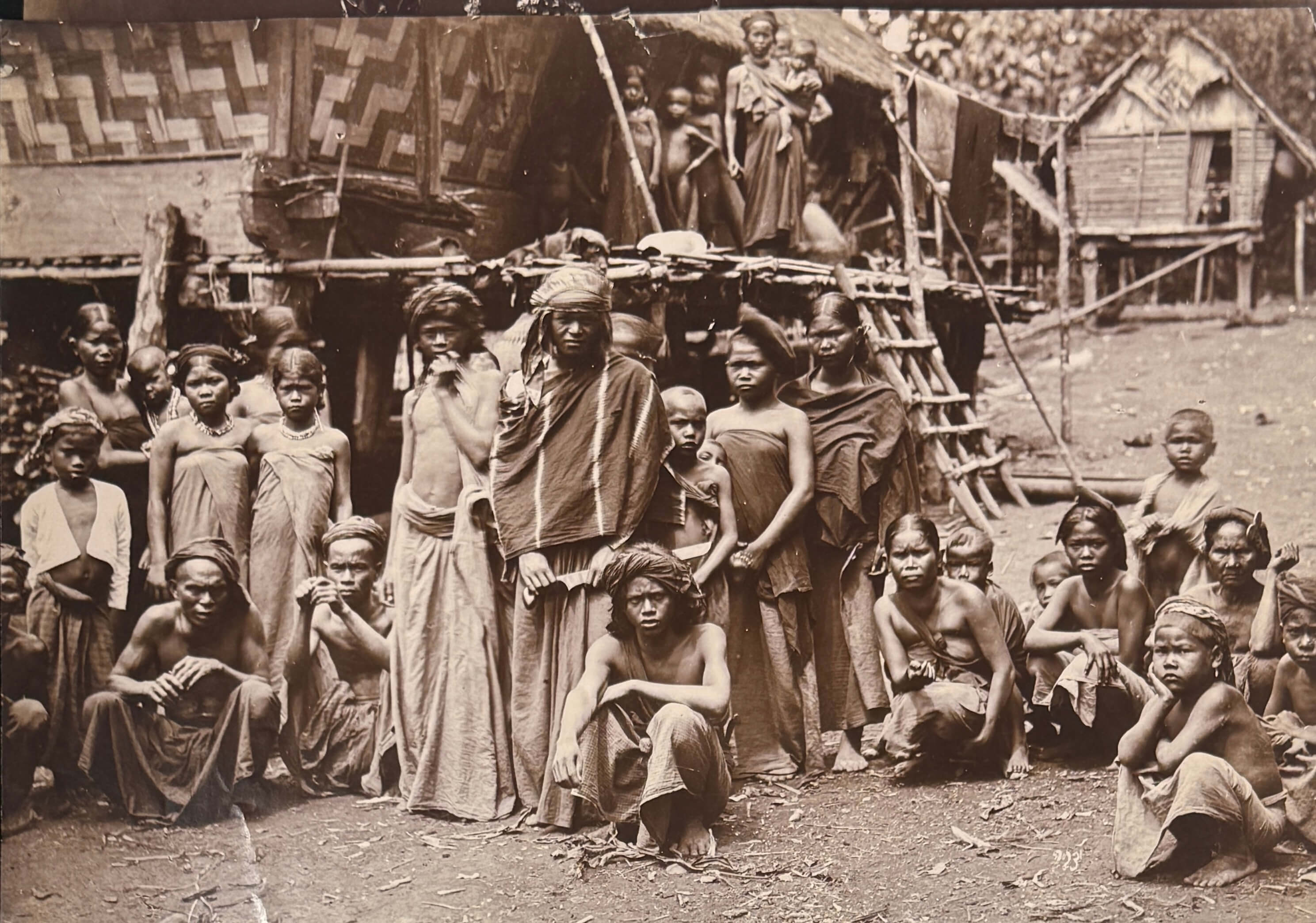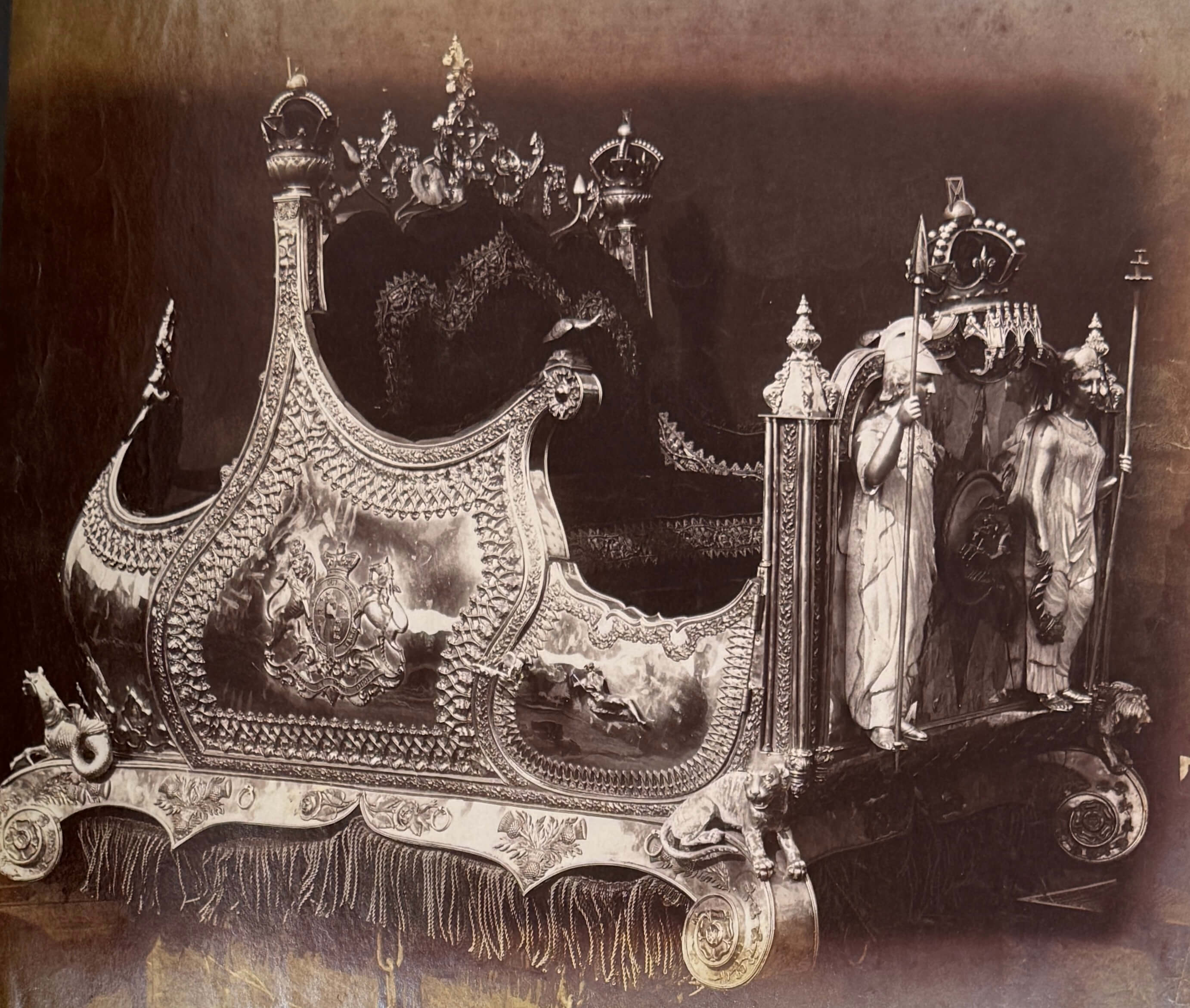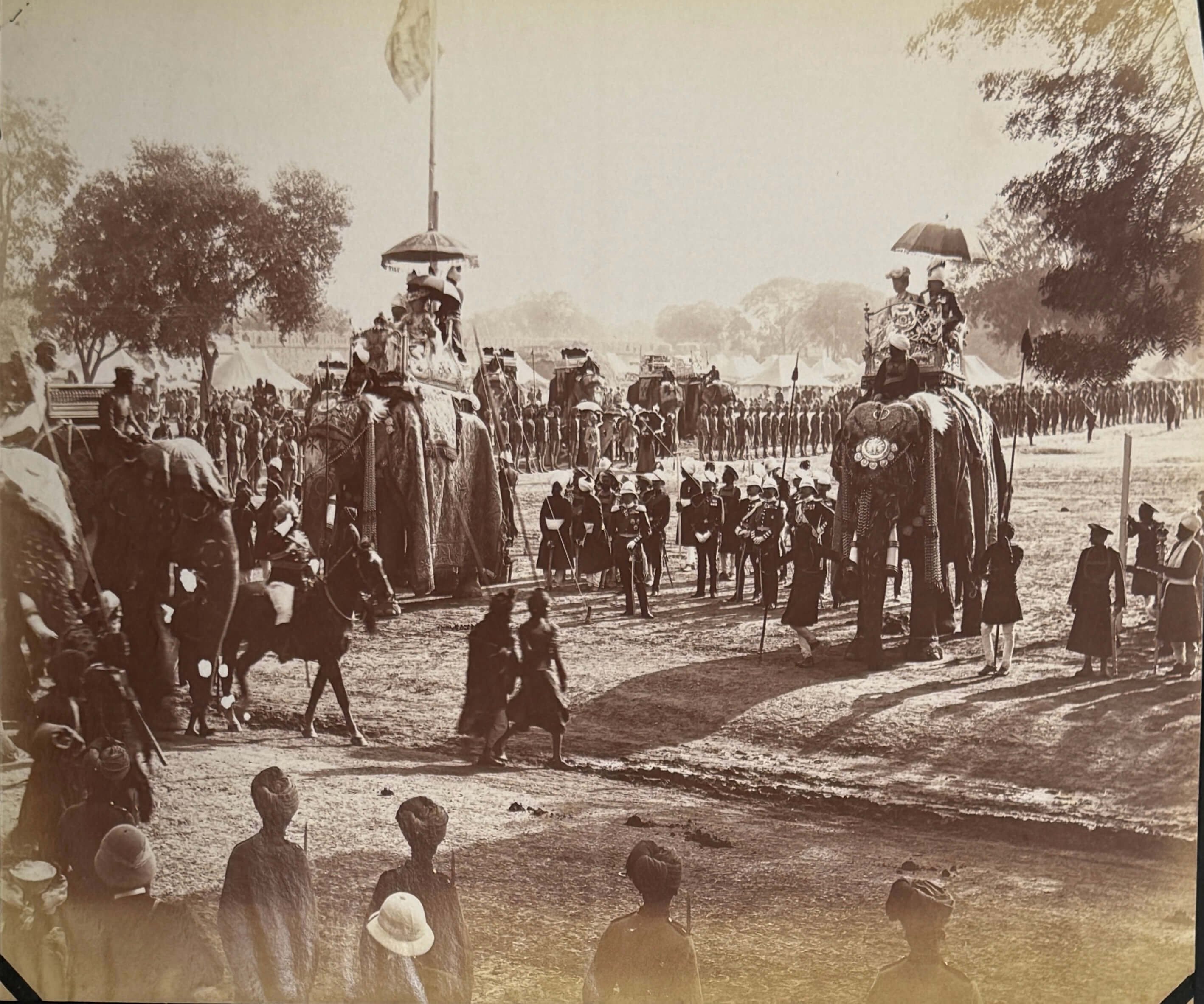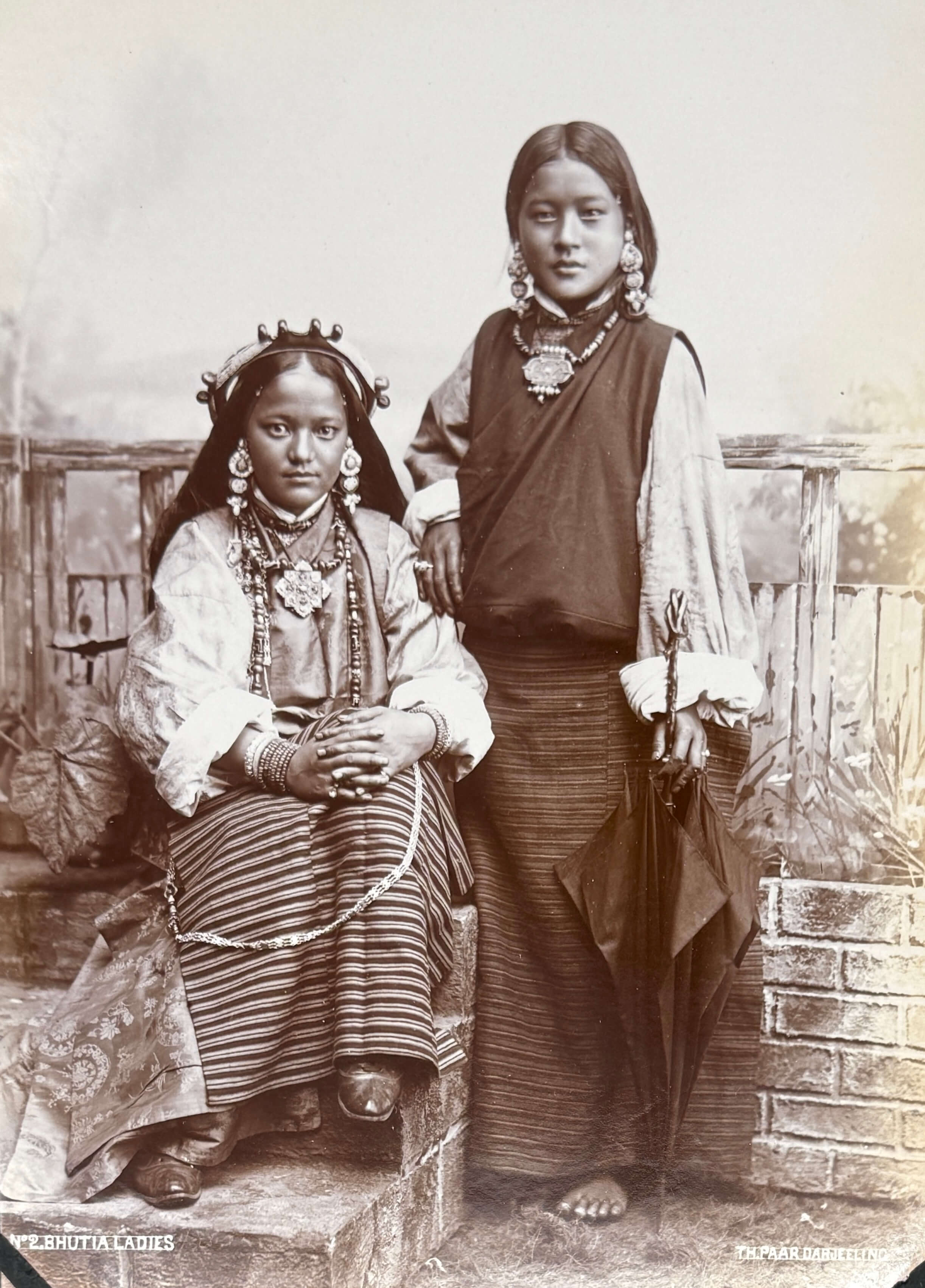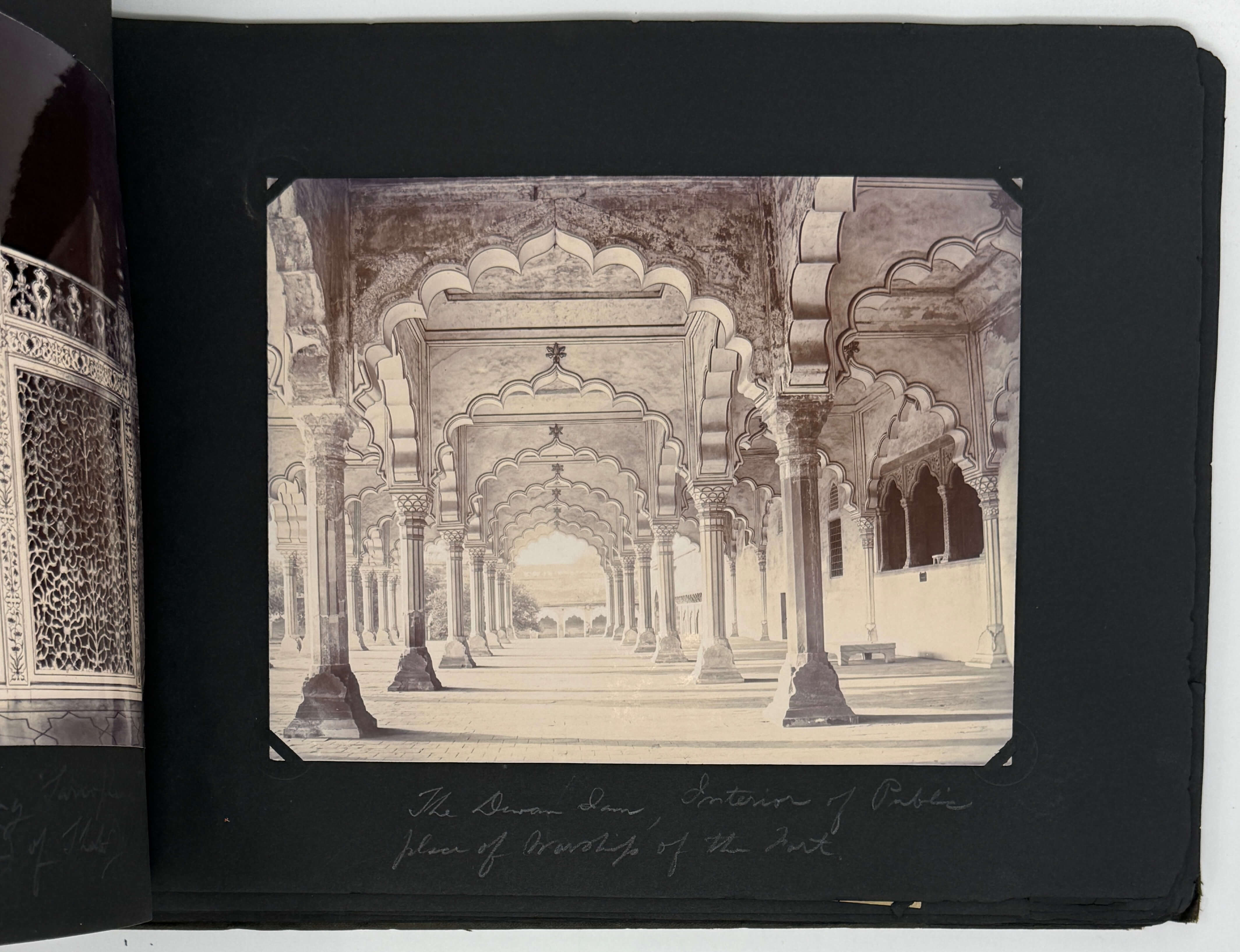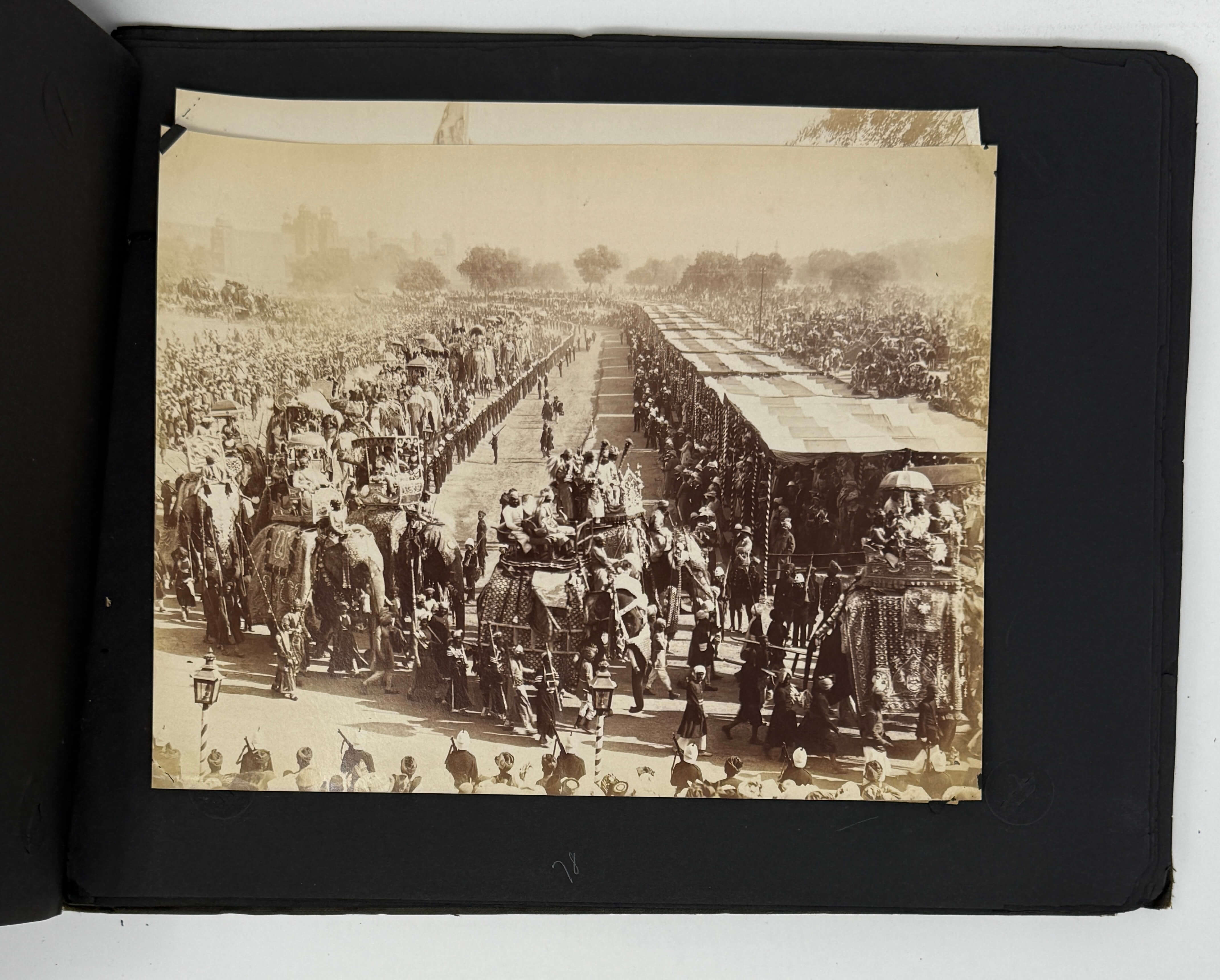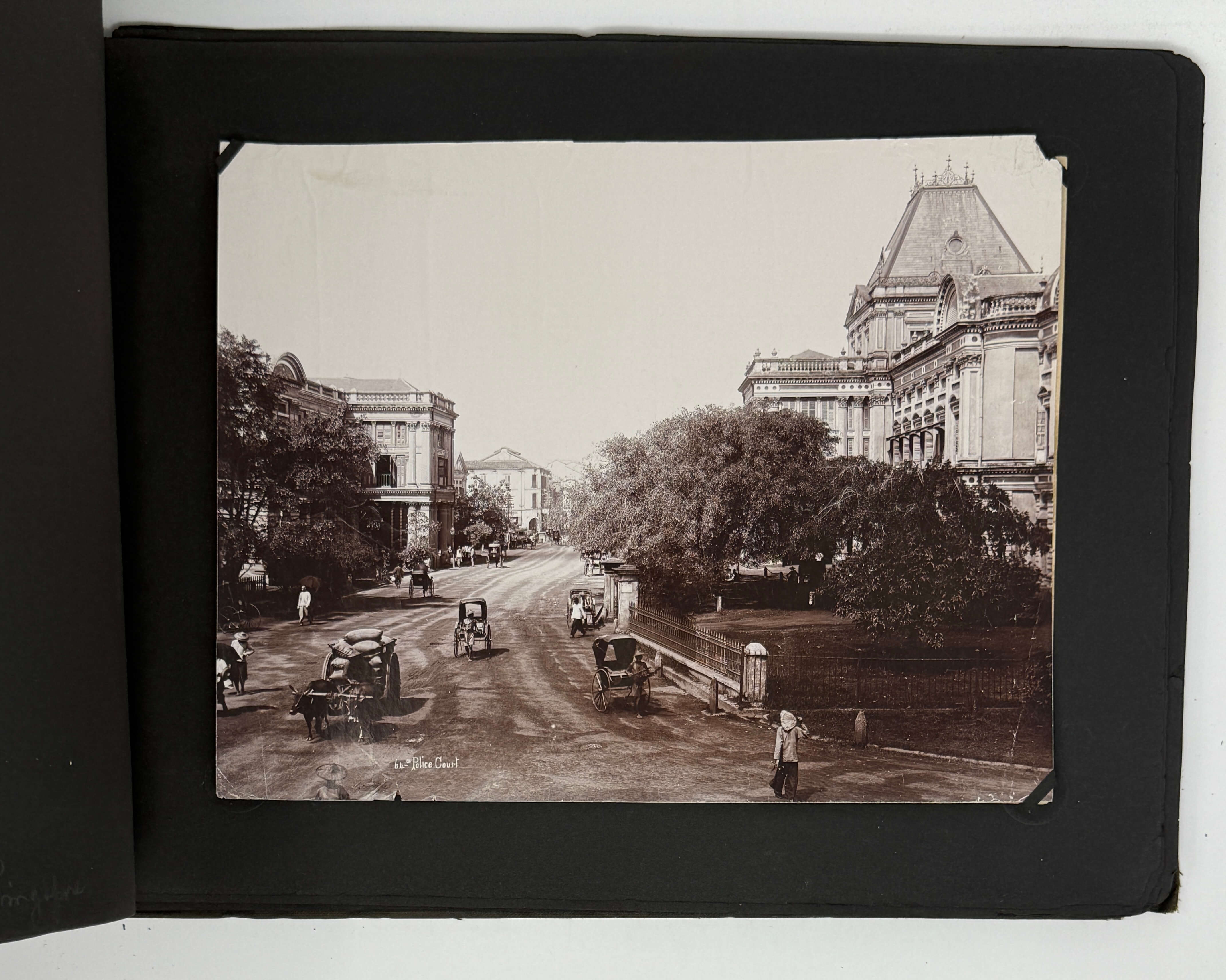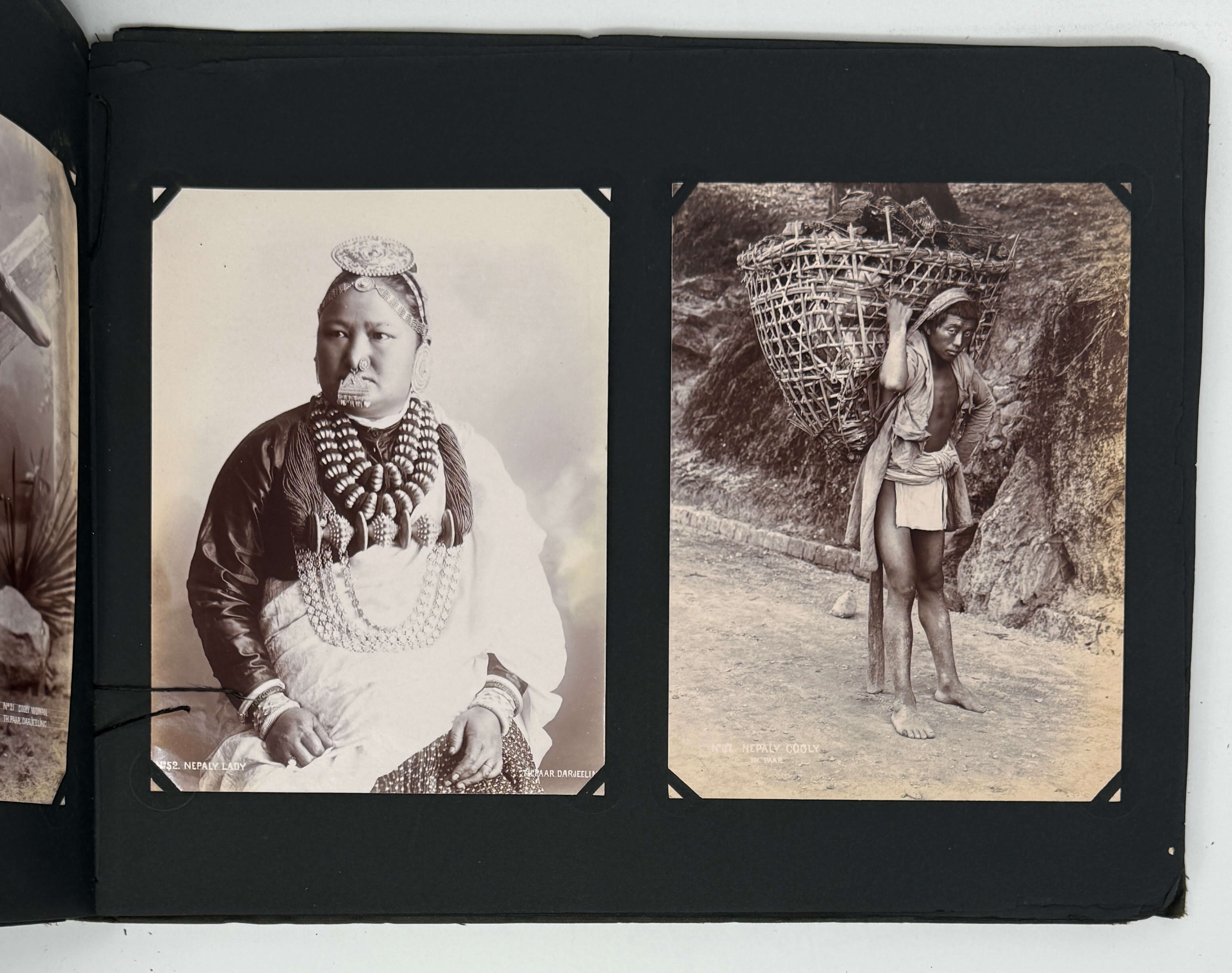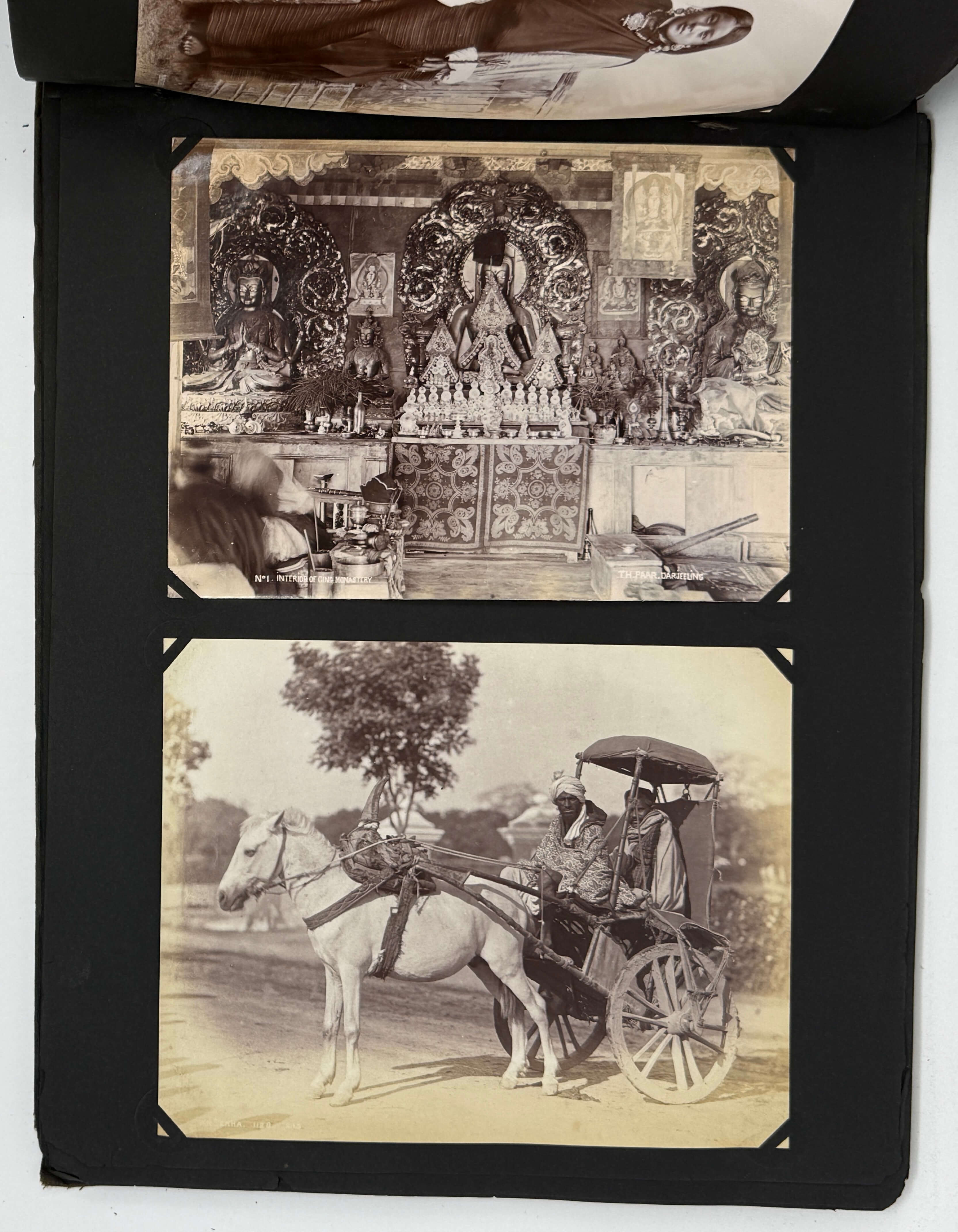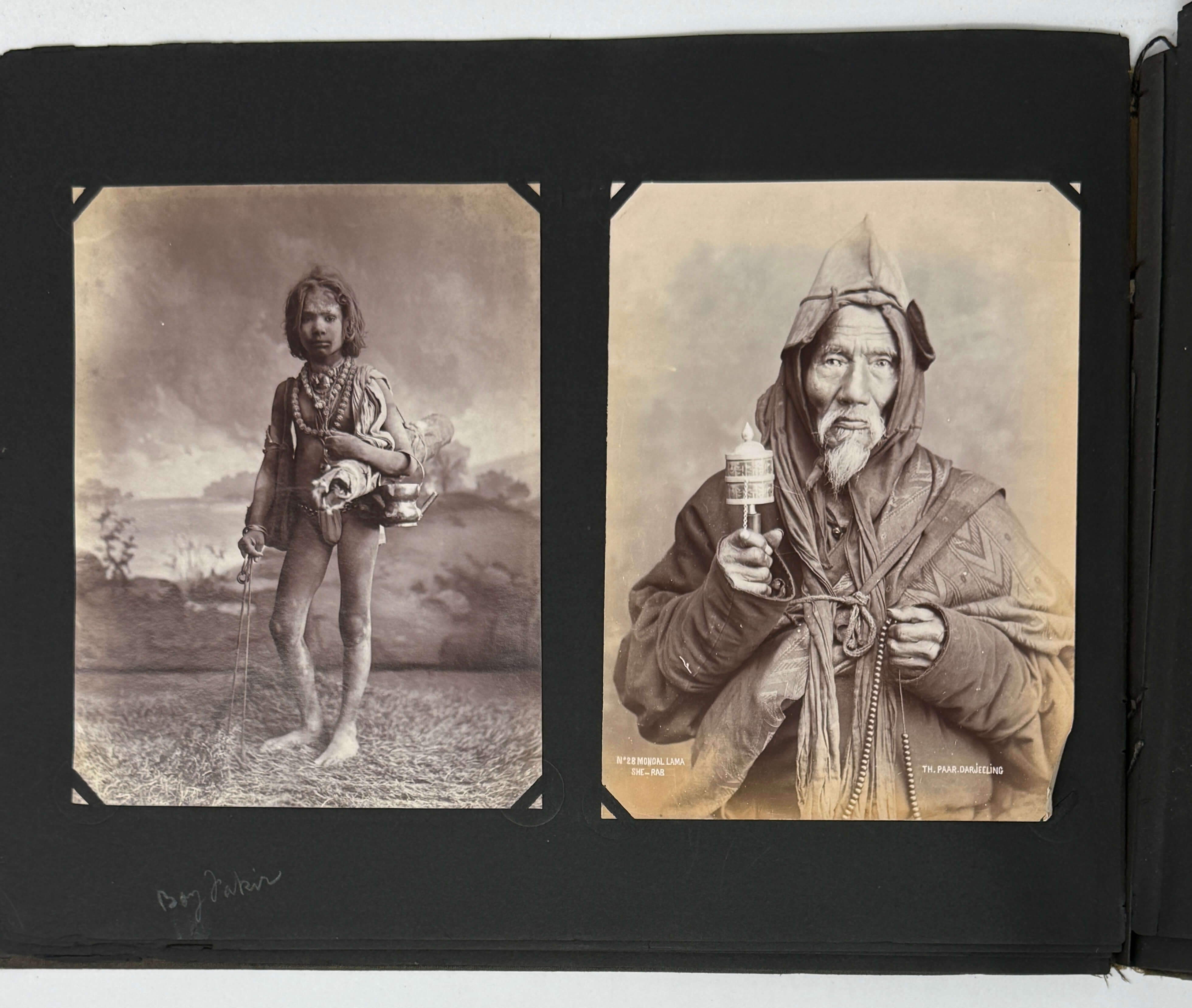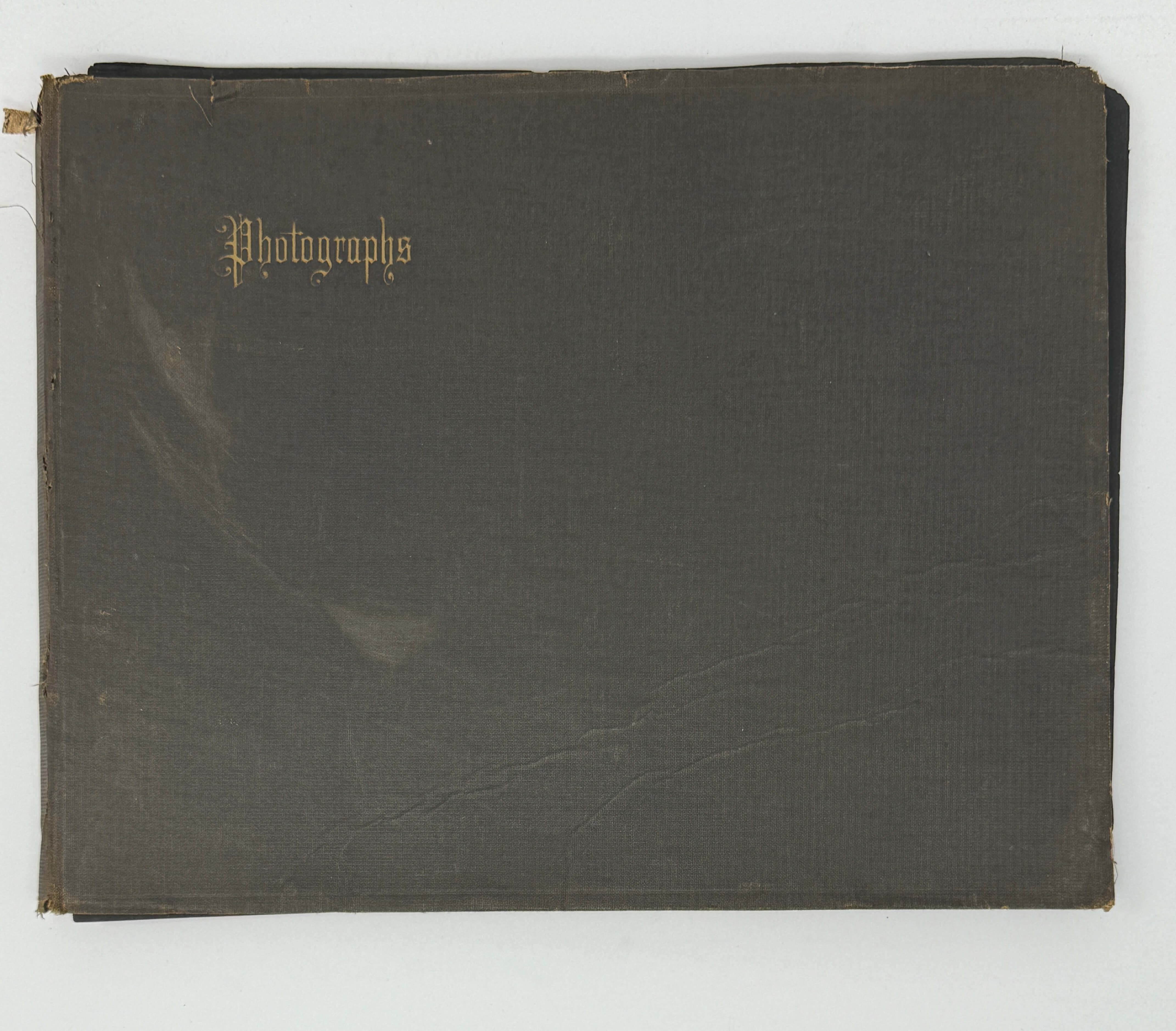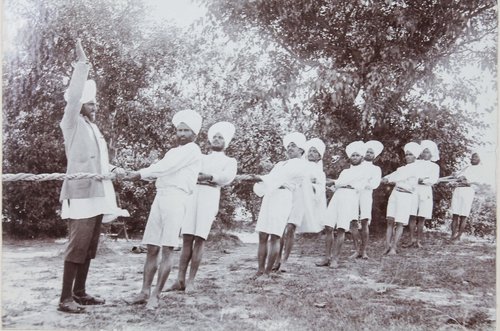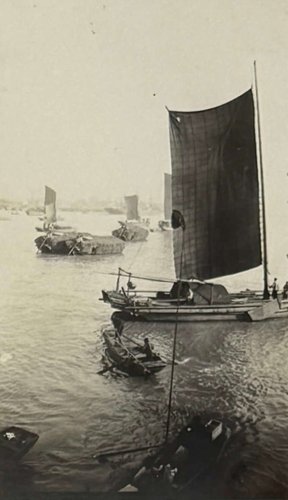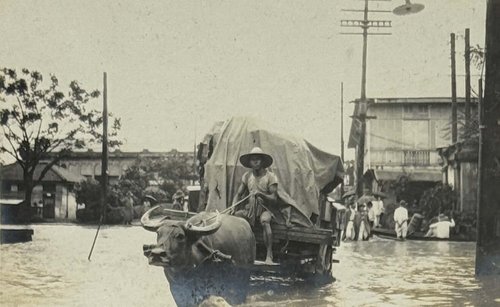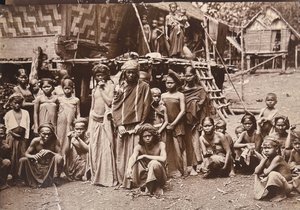
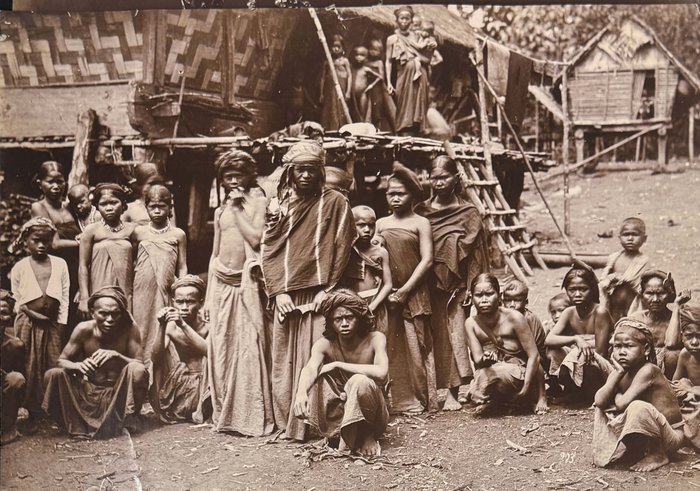
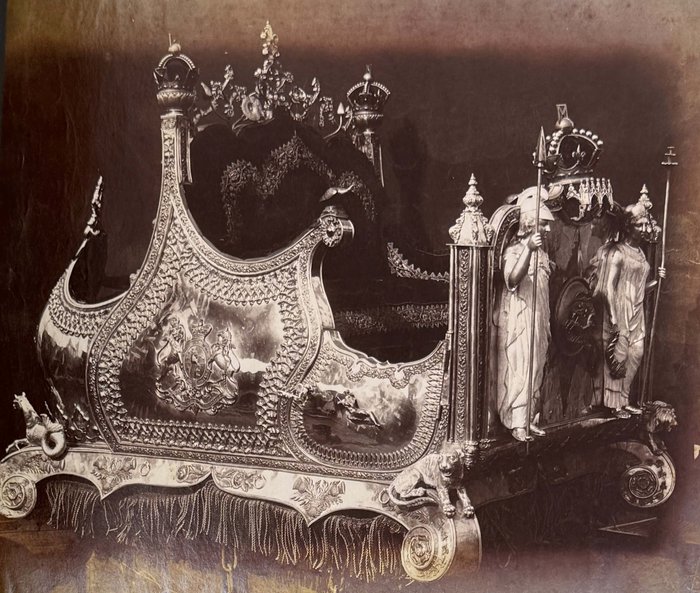
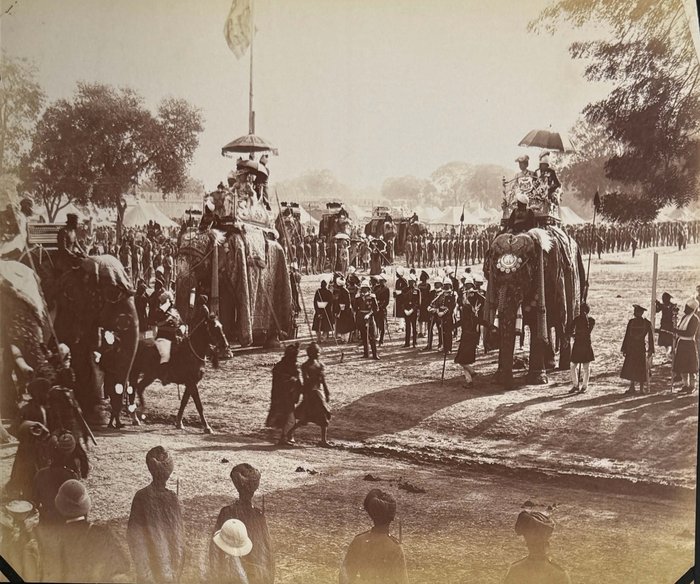
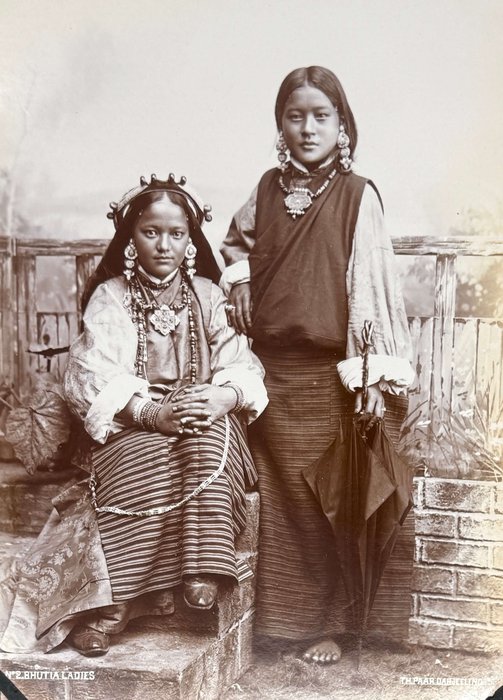
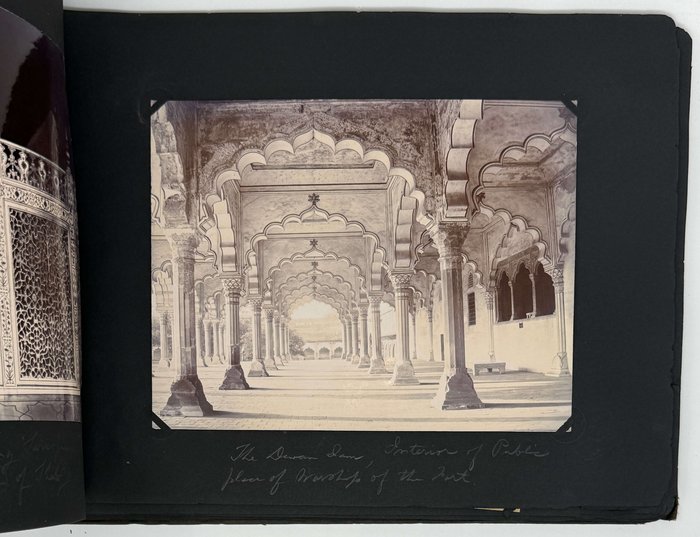
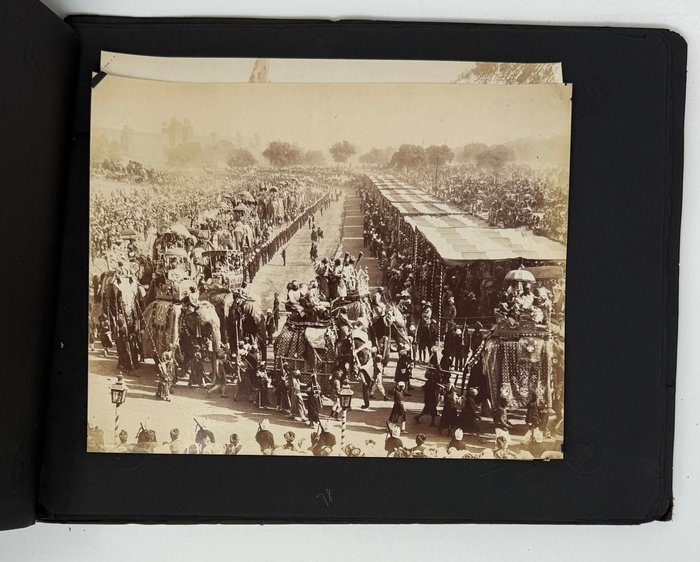

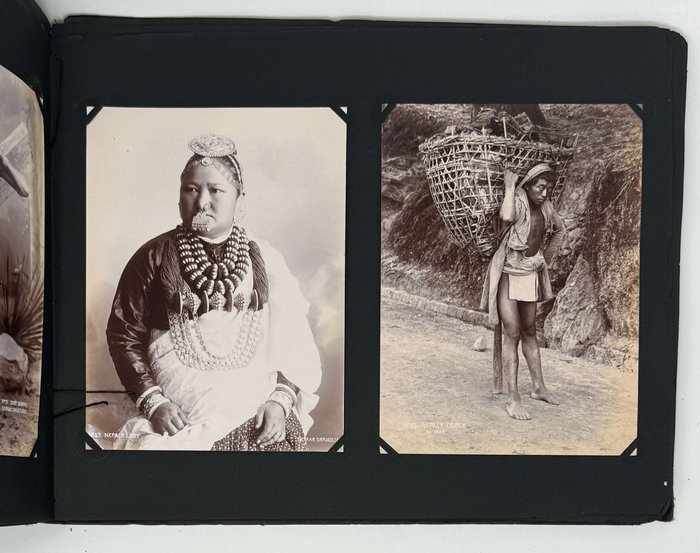
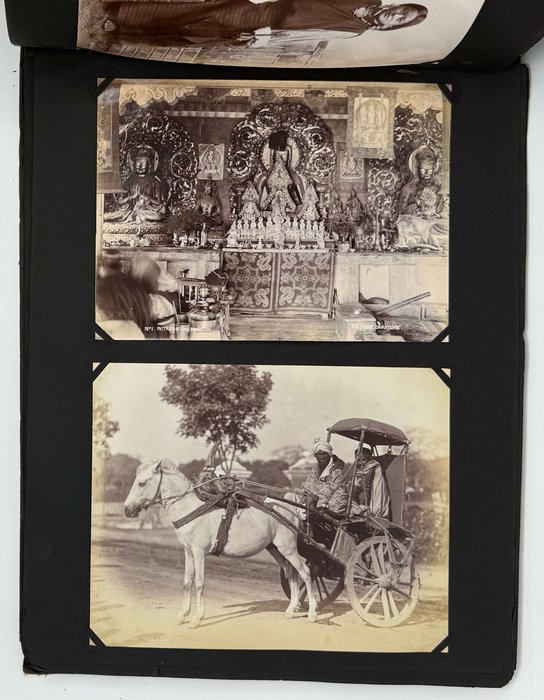
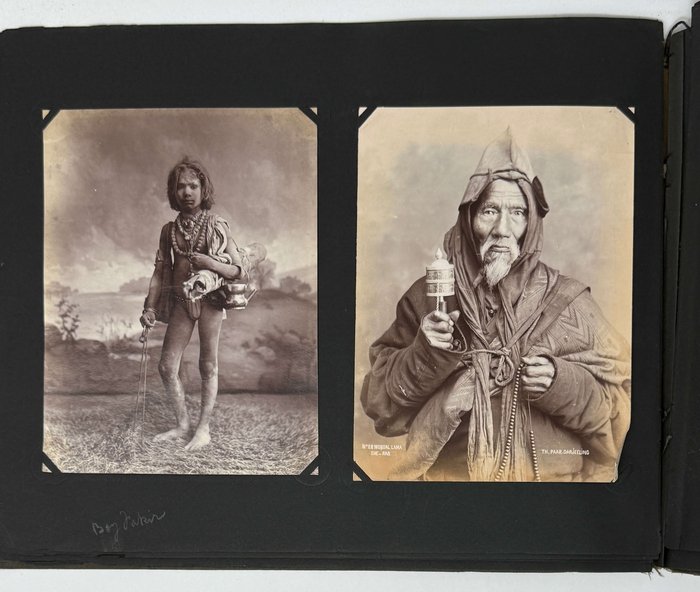
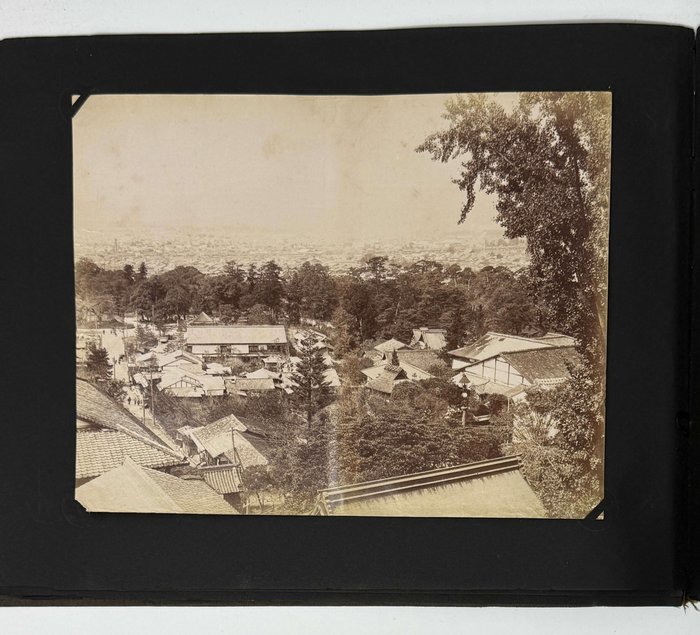
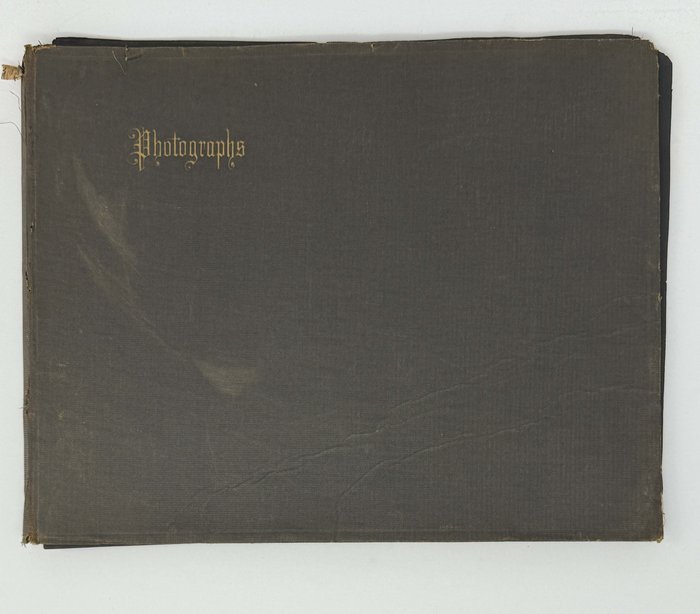
#PB26
Ca. 1890s-1900s
Oblong Folio album (ca. 28,5x35,5 cm or 11 ¼ x 14 in). 47 card stock leaves (over 30 blank). With 42 mounted original albumen and gelatin silver photos, including one panorama 11,5x28,5 cm (4 ½ x 11 ¼ in) and 29 larger images from ca. 23x27,5 cm (9 x 10 ¾ in) to ca. 12,5x17,5 cm (4 ¾ x 7 in); the rest of the photos are ca. 10,5x15 cm (4x6 in) or slightly smaller. Twelve images are captioned, numbered and signed “Th. Paar, Darjeeling” in negative. Ten images with period pencil captions on verso or on the mounts. One photo with an ink stamp “A. Kaulfuss” on verso; one photo with a blind stamp “G.R. Lambert & Co., Singapore” in the right lower corner; three images with ink stamps “Bourne & Shepherd Photographers, Calcutta” on verso. Period black full cloth album. Binding rubbed on extremities and loosened on the hinges, spine with minor cracks and losses; mounts slightly chipping on extremities; several photos with minor creases or losses or one corner, a couple of photos mildly faded, but overall a very good album of strong interesting photos.
Attractive collection of early albumen and gelatin silver photos of India, Singapore and Malaysia. The album includes five gelatin silver photos of Agra: Delhi Gate of Agra Fort; the inner court of the Fort with Diwan-i-Am (Hall of Audience); the interior of Diwan-i-Am with the marble colonnade; Taj Mahal with the reflecting pool and gardens; and Taj cenotaph chamber with the jali screen. Three large albumen photos with the ink stamps of “Bourne and Shepherd” on verso illustrate the Delhi Durbar of 1903 – a festival marking the coronation of Edward VII as the Emperor of India. The images include a close-up view of the Viceroy’s howdah (elephant-borne carriage) and two scenes with the official procession turning at Jama Masjid and at the saluting point outside the city.
Twelve photos of Darjeeling by Theodore Paar show “Mt. Everest from Sandakphu,” “Giabaree Reverse” (Darjeeling Railway), “Interior of Ging monastery,” “A Lama’s grave;” portraits of “Cooly girls,” “Cooly woman,” “Nepaly lady,” “Nepaly cooly,” “Lepcha,” “Bhutia ladies,” “Mongal Lama She-Rab” and a group of young children. Two other smaller portraits depict a “Boy Fakir” and horse carriage drivers.
A large albumen photo with a blind stamp “G.R. Lambert & Co., Singapore” in the right lower corner shows the Central Police Station facing South Bridge Road and Criminal District and Magistrates’ Courts (built in 1885 and demolished in the 1930s). A large gelatin silver photo with the ink stamp “A. Kaulfuss” on the verso shows a group of Malay people in their village. There is also a nice portrait of a “Group of Dyaks [Dayak people]” captioned in pencil “Penang, India.” The other photos portray Indian snake charmers, market goers, a young woman, elephant drivers, a “Filipino washwoman,” a “Filipino native,” children, &c. Overall a nice collection of early, well-preserved images of India, Singapore, Malaysia and their people in the late 19th – early 20th century.
“A partnership between Samuel Bourne and Charles Shepherd, the firm were commercial publishers of landscape and topographical views of India. Although based in Calcutta and Simla, where they operated portrait studios, their work was widely retailed throughout the subcontinent by agents and in Britain by wholesale distributors” (National Portrait Gallery)).
“G. R. Lambert & Co., a photographic studio, was established by Gustave Richard Lambert on 10 April 1867 at 1 High Street. The vast collection of prints produced by the studio now serves as a comprehensive source of photographic documentation of early Singapore. With the advent of photographic technology and an increase in the number of Western tourists visiting Singapore, photographic prints produced by Eastern-based studios became popular in the 1870s in the form of tourism souvenirs. The closure of competing studio, Sachtler & Co., provided an opportunity for G. R. Lambert & Co. to ride on the tides and become the “leading photographic artists of Singapore” at the time. Lambert actively managed his business until the 1880s before he left for Europe and handed over the management of the Singapore branch to his partner, Alexander Koch. From the mid-1890s to the 1900s, Koch expanded the business and established studios at Gresham House, Battery Road and Orchard Road. During its heydays, the company also maintained regional branch studios in Medan (Sumatra), Deli (Sumatra), Kuala Lumpur (Federated Malay States) and Bangkok (Siam). The studio was also appointed the official photographer for King Chulalongkorn of Siam and the Sultan of Johor, Abu Bakar” (National Library Board, Singapore).
“Ernst August Kaulfuss was probably the oldest and most established European photographer north of Singapore at that time. Born in 1861, Kaulfuss arrived in Penang in 1883 and eventually established his photographic business there three years later. <…> Using Penang as his base, Kaulfuss travelled extensively and traversed the whole length of the Malay Peninsula on the backs of elephants, from Province Wellesley in the north to Johor in the south, during the time when there were very few good roads and no railways. Kaulfuss also explored Kedah, visiting southern towns like Kuala Muda, Bandar Bahru and Kulim. The German was summoned to the Anak Bukit Palace by Sultan Abdul Hamid Halim Shah and was duly appointed official photographer of the royal household in 1908” (The Leam Seng, A. Snapshots of Raya Past// New Straits Times, June 8, 2019; see more).

